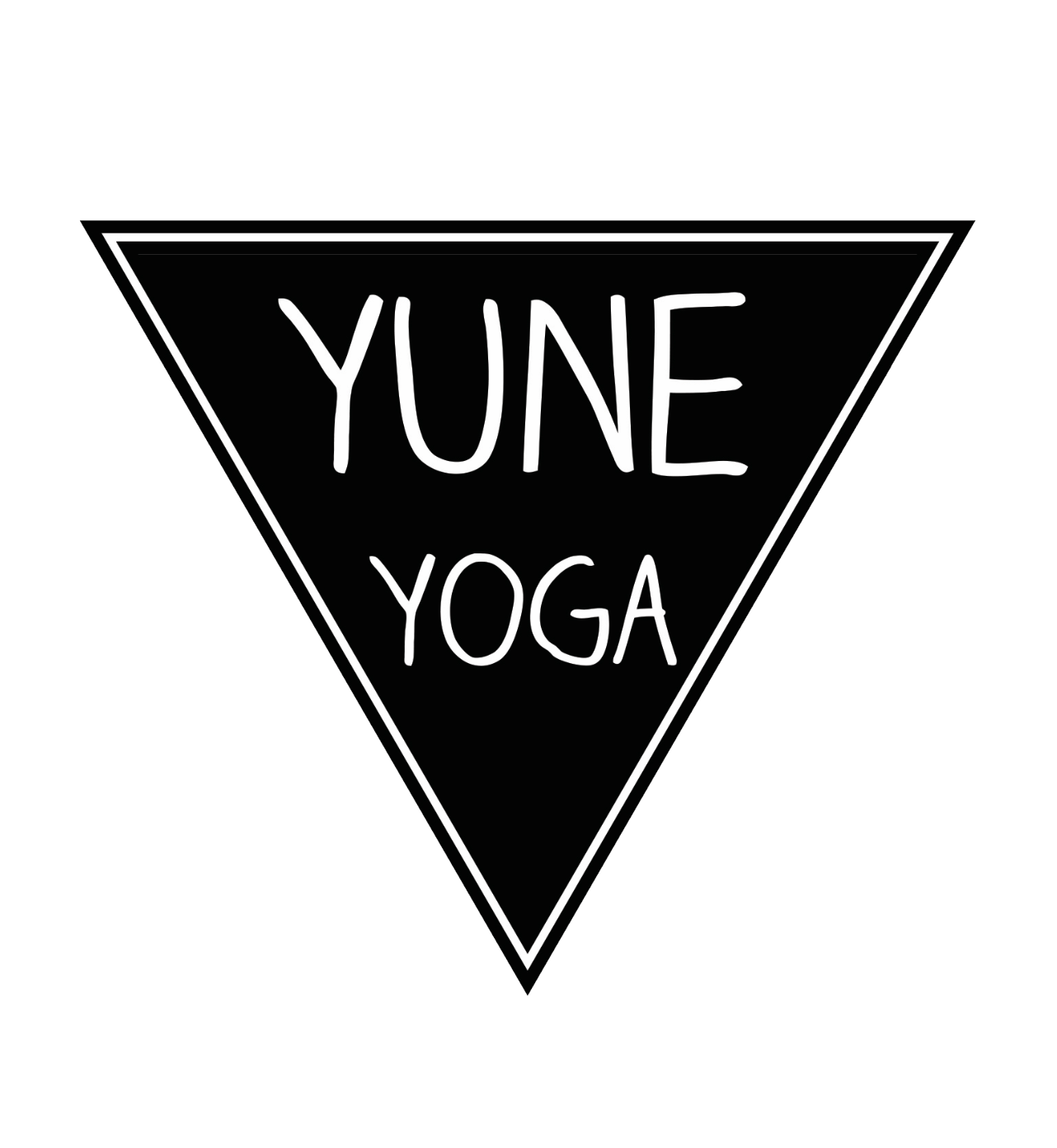
Can You Get Ripped from Yoga? Unveiling the Truth Behind Yoga and Muscle Building
Yoga is often seen as a gentle practice focused on flexibility and relaxation, but can it actually help you get ripped? This article explores the relationship between yoga and muscle building, examining whether yoga can contribute to a chiseled physique. We’ll break down different aspects of yoga, muscle growth, and how they can work together in your fitness routine.
Key Takeaways
- Yoga can build strength, but it may not be as effective for muscle hypertrophy as traditional weightlifting.
- Certain styles of yoga, like power yoga or vinyasa, can promote muscle definition and endurance.
- Nutrition plays a vital role in achieving a ripped physique; yoga alone may not suffice without a proper diet.
- Integrating yoga with strength training can enhance recovery and flexibility, supporting overall muscle growth.
- Common myths about yoga suggest it’s solely for flexibility; however, it can also contribute to strength when practiced correctly.
Understanding Muscle Building Through Yoga

The Basics of Muscle Hypertrophy
Okay, so let's break down how muscles actually grow. It's not magic, but it's pretty cool. Basically, when you work your muscles, you're causing tiny tears in the muscle fibers. Your body then repairs these tears, making the muscle bigger and stronger than before. This process is called hypertrophy. Think of it like patching up a road – you don't just fill the hole, you make the patch a little stronger so it can handle more traffic.
How Yoga Differs from Traditional Strength Training
Yoga and lifting weights? They seem like totally different worlds, right? Traditional strength training usually involves lifting heavy things to overload the muscles. Yoga, on the other hand, often uses bodyweight and focuses on holding poses for longer periods. While both can build strength, they do it in different ways. Weightlifting is more about that intense, short-burst muscle activation, while yoga is more about endurance and controlled movements. It's like comparing a sprint to a marathon – both are challenging, but in very different ways. You can use muscle-building programs to help you with your fitness goals.
The Role of Bodyweight Exercises in Yoga
Yoga relies heavily on bodyweight exercises, which are surprisingly effective for building strength. Think about it: holding a plank engages your core, shoulders, and legs all at once. Doing a chaturanga (yoga push-up) works your chest, triceps, and shoulders. These aren't just stretches; they're strength-building exercises in disguise. Plus, because you're using your own body weight, it's a very functional type of strength. It translates well to everyday activities. Here's a quick look at some key poses:
- Plank: Core, shoulders, glutes
- Chaturanga: Chest, triceps, shoulders
- Warrior poses: Legs, core, balance
- Chair pose: Legs, core, back
Bodyweight exercises in yoga are great because they improve strength and stability. They force you to control your body in space, which is super important for overall fitness and injury prevention. It's not just about lifting heavy; it's about moving well.
It's important to focus on calorie intake to maximize your gains.
Can You Get Ripped from Yoga?
So, can yoga actually get you ripped? It's a question I get asked all the time. The short answer is... it's complicated. Yoga definitely builds strength and improves muscle tone, but whether it's enough to achieve that 'ripped' look depends on a few things. Let's break it down.
The Science Behind Muscle Definition
Muscle definition, that coveted 'ripped' look, comes down to two main factors: muscle mass and low body fat. You need to have enough muscle to be visible, and you need to have a low enough body fat percentage so that the muscle isn't hidden under a layer of fat. Yoga can help with both, but it's more effective at building muscle endurance and tone than packing on serious size. Think of it this way: yoga is more like sculpting than weightlifting. You're refining what's already there, rather than building something entirely new. To really maximize muscle definition, you need to consider your diet and overall fitness routine.
Yoga Styles That Promote Strength
Not all yoga is created equal when it comes to building strength. Some styles are much more physically demanding than others. If your goal is to build muscle, you'll want to focus on styles like:
- Ashtanga: This is a fast-paced, physically challenging style that involves a set sequence of poses. It builds heat, endurance, and strength.
- Power Yoga: A more modern, fitness-focused style that incorporates many of the same poses as Ashtanga, but with more variations and modifications.
- Vinyasa: This style links movement with breath in a flowing sequence. While it can be less structured than Ashtanga or Power Yoga, it can still be a great workout if you focus on holding poses and engaging your muscles.
- Yin Yoga: While not focused on strength building, it can improve flexibility and joint health, which are important for overall fitness and preventing injuries.
It's important to remember that consistency is key. You won't see results overnight. Aim for at least 3-4 yoga sessions per week, and gradually increase the intensity and duration of your workouts. Also, don't be afraid to modify poses to make them more challenging. For example, you can add push-ups into your vinyasa flows or hold plank for longer periods.
Real-Life Examples of Ripped Yogis
While it might be rare to see someone with the same level of muscle mass as a bodybuilder, there are definitely yogis out there who are incredibly fit and have impressive muscle definition. These individuals often combine yoga with other forms of exercise, such as strength training or HIIT, and they pay close attention to their diet. They demonstrate that it's possible to achieve a high level of fitness through yoga, but it requires dedication and a well-rounded approach. It's also important to have realistic expectations. Yoga can help you build a strong, lean physique, but it might not be enough to achieve the extreme muscle mass that some people associate with being 'ripped'.
The Importance of Nutrition in Muscle Development

Dietary Considerations for Muscle Growth
Okay, so you're doing yoga and want to see some muscle definition? You can't just rely on the poses. What you eat is super important. Think of food as fuel. You need the right kind to build anything substantial. It's not just about calories, but the quality of those calories. We're talking whole foods, lean proteins, complex carbs, and healthy fats.
- Prioritize whole, unprocessed foods.
- Focus on getting enough vitamins and minerals.
- Don't be afraid of healthy fats – they're important for hormone production.
It's easy to fall into the trap of thinking more is better when it comes to food and muscle growth. But your body can only process so much at a time. Focus on consistent, quality intake rather than sporadic overeating.
Protein Intake and Recovery
Protein is the building block of muscle. No surprise there, right? But how much do you actually need, and when should you eat it? Aim for a consistent intake throughout the day, especially after your yoga sessions. This helps repair those muscle fibres and encourages growth. Don't just slam a protein shake after class and call it a day. Spread it out.
- Aim for 0.8-1 gram of protein per pound of bodyweight.
- Include protein in every meal.
- Consider a protein powder supplement if you struggle to meet your daily needs through food alone.
Balancing Yoga with Nutritional Needs
Yoga can be demanding, and if you're trying to build muscle, you need to fuel your body accordingly. It's a balancing act. You don't want to overeat, but you also don't want to be in a constant calorie deficit. Pay attention to how your body feels and adjust your diet accordingly. Are you constantly tired? Maybe you need more carbs. Not seeing any muscle growth? Up the protein. It's all about finding what works for you.
Here's a simple way to think about it:
- Track your calorie intake for a week to get a baseline.
- Adjust your macros (protein, carbs, fats) based on your goals.
- Monitor your progress and make changes as needed.
| Nutrient | Importance | Example Foods | Daily Intake (Example) |
|---|---|---|---|
| Protein | Muscle repair and growth | Chicken, fish, beans, tofu | 150g |
| Carbohydrates | Energy for workouts | Oats, brown rice, sweet potatoes | 200g |
| Fats | Hormone production, overall health | Avocado, nuts, olive oil | 75g |
Remember, consistency is key. You won't see results overnight, but with a solid nutrition plan and a consistent yoga practice, you'll be well on your way to building muscle and strength.
Strength Training vs. Yoga: A Comparative Analysis
Benefits of Weightlifting for Muscle Gain
Weightlifting, or resistance training, is the cornerstone of building significant muscle mass. It works by creating micro-tears in muscle fibers, which the body then repairs and rebuilds, leading to hypertrophy (muscle growth). The progressive overload principle, where you gradually increase the weight, reps, or sets, is key to continuous muscle development.
- Directly targets specific muscle groups.
- Allows for precise control over resistance and intensity.
- Facilitates greater mechanical tension, a primary driver of muscle growth.
Weightlifting provides a more direct and efficient pathway to muscle hypertrophy compared to yoga, primarily due to its ability to apply high levels of mechanical tension to the muscles.
How Yoga Complements Strength Training
While yoga might not be the primary driver of muscle growth, it offers several benefits that can complement a strength training program. Yoga improves flexibility, balance, and body awareness, which can reduce the risk of injury during weightlifting. Certain styles of yoga, like power yoga or ashtanga, can also contribute to muscular endurance and stability. It's a great way to improve your muscle and strength-building mistakes.
- Enhances flexibility and range of motion.
- Improves balance and stability.
- Promotes recovery and reduces muscle soreness.
Finding the Right Balance Between Both
The ideal approach for many is to integrate both strength training and yoga into a well-rounded fitness routine. Strength training can be the foundation for building muscle, while yoga can support recovery, flexibility, and overall well-being. The specific balance will depend on individual goals and preferences. For example, someone focused on maximizing muscle mass might prioritize weightlifting with yoga as a supplementary activity, while someone seeking overall fitness and well-being might aim for a more even split. Here's a possible weekly schedule:
| Day | Activity |
|---|---|
| Monday | Strength Training |
| Tuesday | Yoga |
| Wednesday | Rest |
| Thursday | Strength Training |
| Friday | Yoga |
| Weekend | Active Recovery |
Common Misconceptions About Yoga and Muscle Building
Yoga as a Sole Method for Getting Ripped
Okay, so here's the deal. A lot of people think yoga alone can get you super ripped. Like, cover-model ripped. And while yoga is amazing for a ton of things – flexibility, balance, mental clarity, even some strength – it's probably not going to turn you into a bodybuilder. Yoga definitely builds strength, but it's a different kind of strength than you get from lifting heavy weights. It's more about endurance and using your own body weight. If you're aiming for serious muscle mass, you'll likely need to add some traditional strength training into the mix. Think of yoga as a fantastic complement to weightlifting, not a replacement. It's about finding the right balance for your goals. For example, muscle recovery techniques can be enhanced with yoga.
The Myth of Flexibility Over Strength
There's this idea floating around that yoga is all about flexibility, and strength is secondary. That's not entirely true. Sure, flexibility is a big part of it, but many yoga poses require a surprising amount of strength to hold and maintain. Think about plank, chaturanga, or even some of the more advanced balancing poses. These aren't just about being bendy; they demand serious core strength, arm strength, and leg strength. It's more accurate to say that yoga develops a specific type of strength that often gets overlooked. It's functional strength, the kind that helps you move better in everyday life. It's not always about lifting the heaviest weight, but about controlling your body with precision and power.
Understanding Muscle Fatigue in Yoga
People sometimes underestimate how tiring yoga can be. You might not be lifting hundreds of pounds, but holding poses for extended periods, especially in a heated room, can really take a toll on your muscles. It's a different kind of fatigue than you get from weightlifting, but it's fatigue nonetheless. It's important to listen to your body and not push yourself too hard, especially when you're first starting out.
Muscle fatigue in yoga often comes from sustained isometric contractions, which can be just as demanding as lifting weights. Pay attention to your form and take breaks when needed to avoid injury and maximize the benefits of your practice.
Here's a quick comparison of fatigue types:
| Type of Exercise | Primary Energy System | Type of Fatigue | Recovery Time |
|---|---|---|---|
| Weightlifting | Anaerobic | Muscle Fiber Damage | 24-72 hours |
| Yoga | Aerobic & Anaerobic | Glycogen Depletion, Isometric Fatigue | 12-48 hours |
Here are some things to keep in mind:
- Proper hydration is key.
- Don't skip your cool-down.
- Listen to your body and modify poses as needed.
Integrating Yoga into a Muscle-Building Routine
Creating a Balanced Workout Plan
Okay, so you want to build muscle and keep up with your yoga practice? It's totally doable, but it takes some planning. You can't just throw a bunch of random workouts together and expect amazing results. Think of it like this: your strength training is the main course, and yoga is the awesome side dish that makes everything better.
- Prioritize your goals: Are you trying to pack on serious size, or are you more focused on overall fitness and a lean physique? This will influence how you split your time between lifting and yoga.
- Structure your week: Maybe you do strength training three days a week and yoga on the other days. Or, you could alternate strength and yoga days. Experiment and see what works best for your body and schedule.
- Listen to your body: Don't be afraid to adjust your plan based on how you're feeling. If you're super sore from a tough leg day, maybe skip the intense yoga flow and opt for a restorative session instead.
Incorporating Yoga for Recovery
Yoga isn't just about flexibility; it's also a fantastic tool for recovery. After a brutal strength and muscle workout, your muscles are going to be screaming. Yoga can help ease that soreness and get you ready for your next session.
- Increased Blood Flow: Gentle yoga poses can increase blood flow to your muscles, which helps deliver nutrients and remove waste products.
- Reduced Muscle Tension: Holding poses like child's pose or downward-facing dog can release tension in tight muscles.
- Improved Flexibility: Yoga can help improve your range of motion, which can prevent injuries and improve your performance in the gym.
Yoga can be a game-changer for recovery. It's not just about stretching; it's about connecting with your body and giving it what it needs to heal and rebuild. Don't underestimate the power of a good yoga session after a tough workout.
Tips for Maximizing Muscle Gains with Yoga
Alright, so you're ready to combine yoga and muscle building. Here are a few tips to help you get the most out of both:
- Focus on Strength-Building Yoga Styles: Not all yoga is created equal. Styles like power yoga, vinyasa, and ashtanga can be surprisingly challenging and can help build strength and endurance.
- Incorporate Resistance: Use resistance bands during your yoga practice to add an extra challenge and target specific muscle groups.
- Pay Attention to Your Diet: You can't build muscle without proper nutrition. Make sure you're eating enough protein and calories to support muscle growth. A calorie intake is important.
Here's a sample weekly schedule:
| Day | Activity |
|---|---|
| Monday | Strength Training (Legs) |
| Tuesday | Yoga (Vinyasa) |
| Wednesday | Rest |
| Thursday | Strength Training (Upper) |
| Friday | Yoga (Restorative) |
| Saturday | Strength Training (Full) |
| Sunday | Active Recovery (Walk) |
The Role of Recovery in Muscle Growth
How Yoga Aids in Recovery
Yoga can be a surprisingly effective tool for recovery. It's not just about stretching; certain poses and breathing techniques can help reduce inflammation and improve blood flow to tired muscles. This can speed up the repair process and get you back in the gym or on the mat sooner. Plus, the focus on mindfulness can lower stress levels, which is a big win since stress can hinder muscle growth.
Importance of Rest Days
Rest days are absolutely non-negotiable. They're when your muscles actually rebuild and get stronger. Think of it like this: you break down your muscles during a workout, and rest is when they get patched up and improved. Skipping rest days is like trying to build a house without letting the cement dry – it's just not going to work.
Here's a quick look at why rest is so important:
- Muscle repair and growth
- Replenishing energy stores
- Preventing overtraining and injury
Listening to Your Body: Signs of Overtraining
It's easy to get caught up in pushing yourself, but it's crucial to pay attention to what your body is telling you. Overtraining can lead to injuries, burnout, and stalled progress. Some common signs include:
- Persistent muscle soreness
- Decreased performance
- Sleep disturbances
- Increased irritability
Ignoring these signs is a recipe for disaster. If you're constantly feeling run down, it's time to scale back and prioritize recovery. Remember, progress isn't always about doing more; sometimes, it's about doing less and allowing your body to heal.
Final Thoughts on Yoga and Getting Ripped
So, can yoga really help you get ripped? Well, it’s not the magic solution some might hope for. Sure, yoga can improve flexibility, balance, and even core strength, but if you’re looking to build serious muscle, you’ll need to incorporate some weight training into your routine. Yoga can complement your workouts and help with recovery, but it shouldn’t be your only focus if your goal is to bulk up. Remember, getting ripped is about a mix of strength training, proper nutrition, and rest. So, if you love yoga, keep it in your routine, but don’t forget to hit the weights too!
Frequently Asked Questions
Can yoga help you build muscle?
Yes, yoga can help you build muscle, especially if you practice styles that focus on strength, like power yoga or ashtanga.
How does yoga compare to weightlifting?
Yoga uses bodyweight for resistance, while weightlifting uses weights. Both can build strength, but they do it in different ways.
Do you need to eat differently if you do yoga?
Yes, nutrition is important. Eating enough protein and calories can help support muscle growth, no matter what exercise you do.
Can you get ripped just by doing yoga?
It’s possible to get toned from yoga, but combining it with other strength training can lead to better results for getting ripped.
What are some yoga poses that build strength?
Some strength-building poses include Warrior poses, Plank, and Chair pose. These engage multiple muscle groups.
Is recovery important after yoga?
Yes, recovery is crucial. It helps your muscles heal and grow stronger, so make sure to rest and eat well after your workouts.


